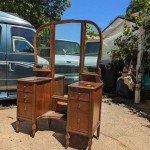Living Room Mirror
A living room mirror serves both functional and aesthetic purposes. It can create the illusion of more space, amplify natural light, and act as a decorative element, reflecting the room's style and personality. Choosing the right mirror involves considering factors like size, shape, frame, and placement to maximize its impact and complement the existing decor.
Size and Shape Considerations
The size and shape of a living room mirror significantly influence its effect. A large mirror can dramatically open up a smaller space, making it feel brighter and more airy. Oversized mirrors, often leaning against a wall or mounted vertically, create a statement piece while enhancing the room's dimensions. Horizontal rectangular mirrors can visually widen a narrow room, while tall, vertical mirrors emphasize height. Round or oval mirrors soften the lines of a room and add a touch of elegance, particularly when paired with angular furniture.
Proportion is key when selecting a mirror size. A mirror placed above a fireplace mantel should generally be two-thirds to three-fourths the width of the mantel. For mirrors hung above furniture like sofas or consoles, they should be slightly narrower than the furniture piece itself, creating visual balance. A common mistake is choosing a mirror too small for the space, which can appear insignificant and fail to achieve the desired impact.
Frame Styles and Materials
The frame of a mirror significantly contributes to its overall aesthetic. Ornate, carved wooden frames add a traditional or antique touch, while sleek metal frames offer a modern or contemporary feel. Frameless mirrors contribute to a minimalist aesthetic, reflecting light and blending seamlessly with the surrounding decor. Choosing a frame that complements the existing furniture and decor is crucial for creating a cohesive look. For example, a mirror with a gilded frame could complement a room with traditional furnishings and metallic accents.
Materials such as bamboo, rattan, or reclaimed wood offer a natural and textured element, fitting well within bohemian or rustic styles. Mirrored frames add a touch of glamour and can enhance the reflective qualities of the piece. The color of the frame should also be considered. Dark frames can create a dramatic contrast against lighter walls, while metallic frames add a touch of shine and sophistication.
Placement and Functionality
Strategic placement is essential for maximizing the benefits of a living room mirror. Positioning a mirror opposite a window reflects natural light deeper into the room, brightening the space and creating a sense of airiness. This is particularly beneficial in rooms with limited natural light sources. Avoid placing mirrors opposite doorways or other areas where the reflection may be undesirable or distracting.
Consider the focal point of the room when placing a mirror. A mirror can enhance and draw attention to a particular feature, such as a piece of artwork, a fireplace, or a decorative arrangement. A mirror placed above a console table can serve as a functional element for checking one's appearance before leaving the house, while also reflecting light and adding a decorative touch to the entryway area of the living room.
Using mirrors to create a gallery wall is another design technique. Combining different sizes, shapes, and frame styles of mirrors can add a unique and eclectic element to the living room. This approach allows for personalization and creativity, showcasing a collection of mirrors that reflect individual style and taste.
Furthermore, the angle of a mirror can subtly impact the reflection. Tilting a mirror slightly downwards can broaden the view of the room, while tilting it upwards can emphasize the ceiling height. Experimenting with different angles can help achieve the desired visual effect and optimize the mirror's functionality within the space.
Integrating a mirror into the living room design involves careful consideration of its size, shape, frame, and placement. Choosing a mirror that complements the existing decor and serves both aesthetic and functional purposes contributes to a well-designed and visually appealing living space. Proper placement can maximize natural light, enhance the sense of space, and create a focal point, ultimately transforming the room's atmosphere.

3 Layered Decorative Wall Mirror With Metal Frame For Dining Living Room Costway

Wallbeyond 27 In W X 67 H Rattan Rectangle Natural Color Wood Framed Farmhouse Style Wall Mirror Interior Design Home Decor R314137a The Depot

10 Impressive Oversized Mirrors To Make Any Room Feel Bigger Large Mirror Living Wall

Seafuloy Round Wall Mirror Metal Frame Circle For Bedroom Bathroom Entryway Decor 30 In W X H Gold Ym Yj Gd30 The Home Depot

Parisloft Round Wood Mirror With Carved Frame Rustic Large Wall Mirro Parislofthome

5 Easy Ways Living Room Mirrors Can Amp Up Your Space

How To Decorate With Mirrors Decorating Ideas For
Living Room Mirror Ideas 16 Stylish Tips That Dazzle

Neutype Wall Mirror 47 X22 Large Mounted For Bedroom Bathroom Living Room Aluminum Alloy Black No Stand Com

51 Unique And Lovely Wall Mirror Designs For Living Room Part 16 Decor Mirrors








